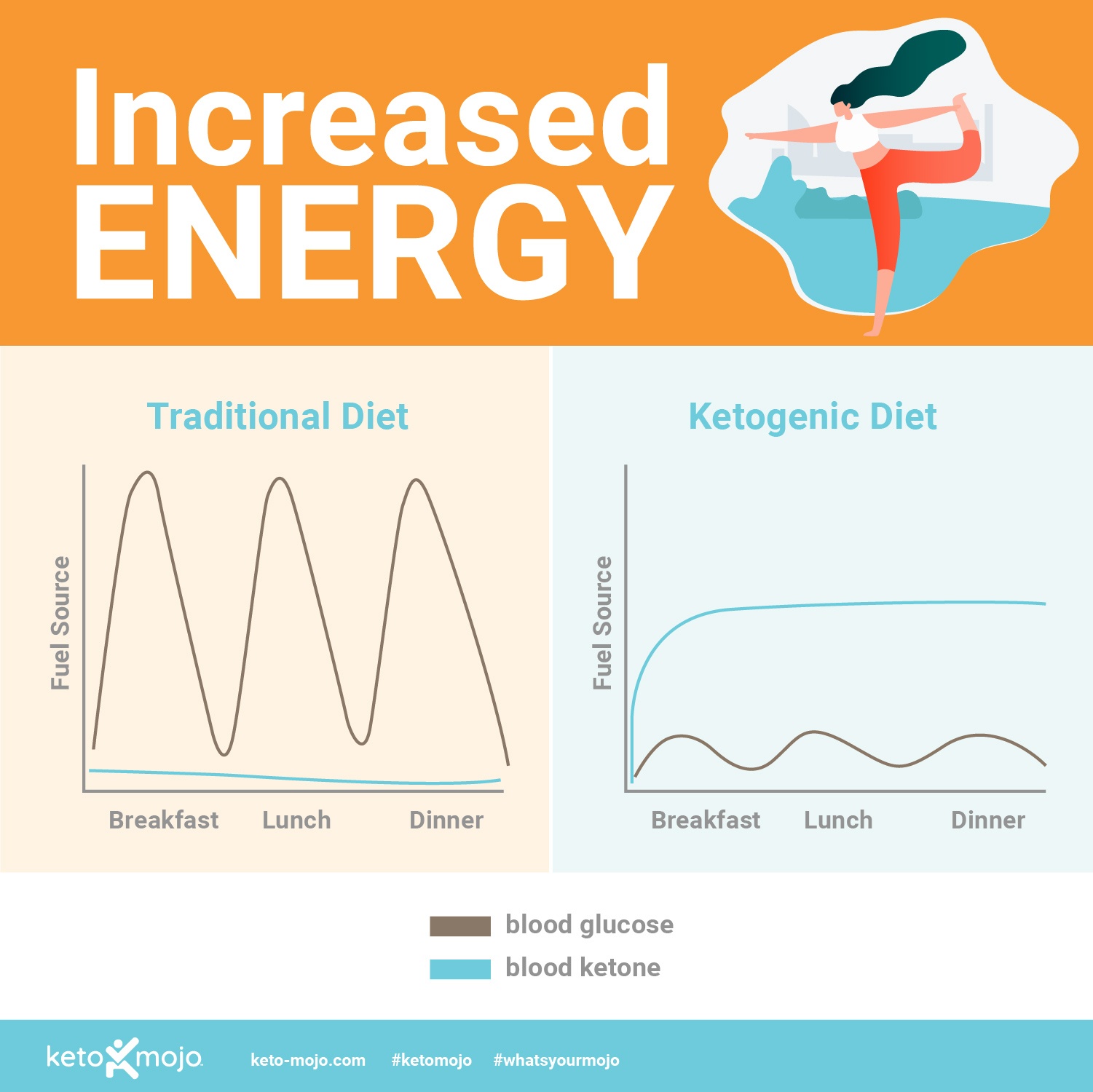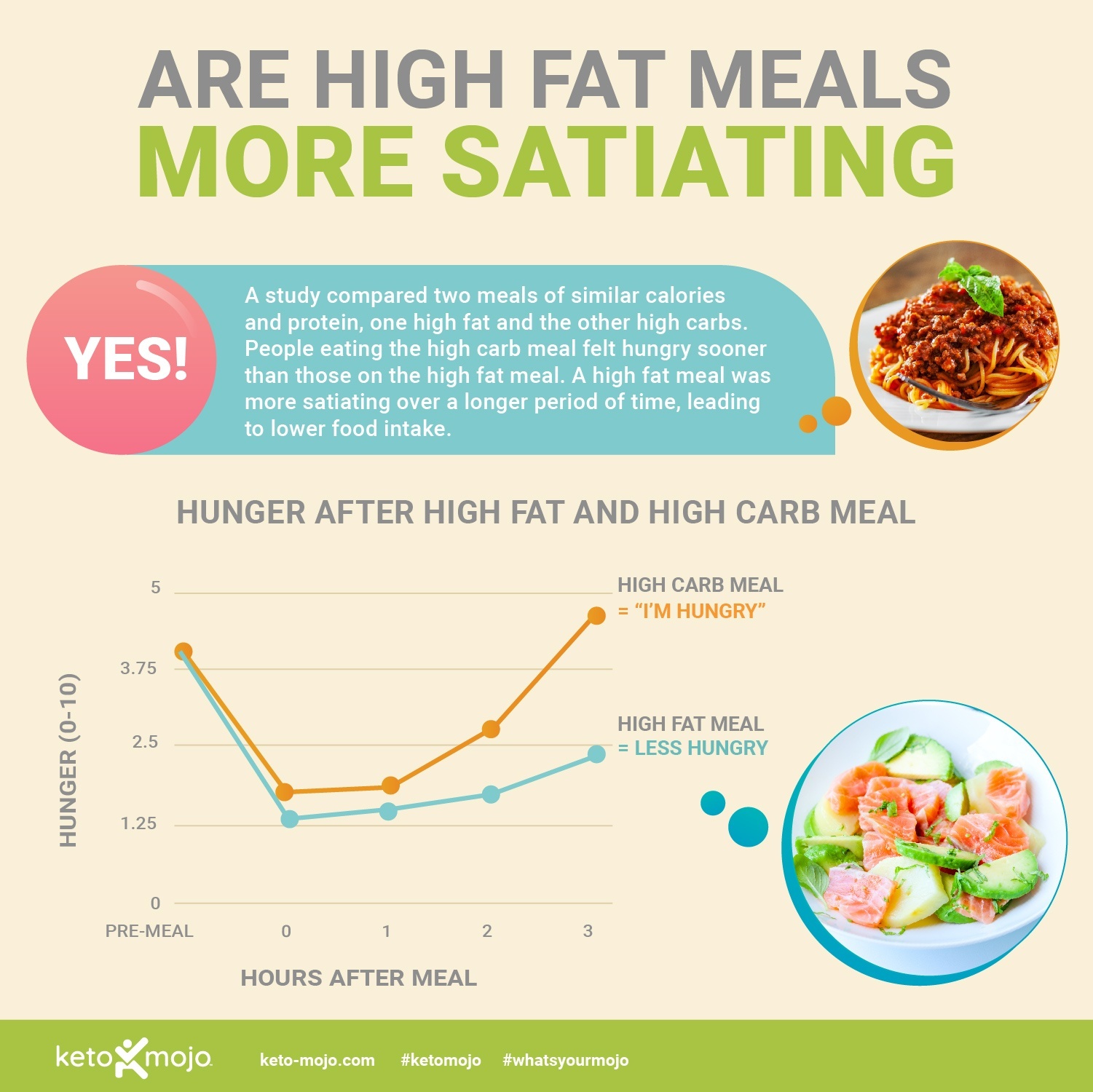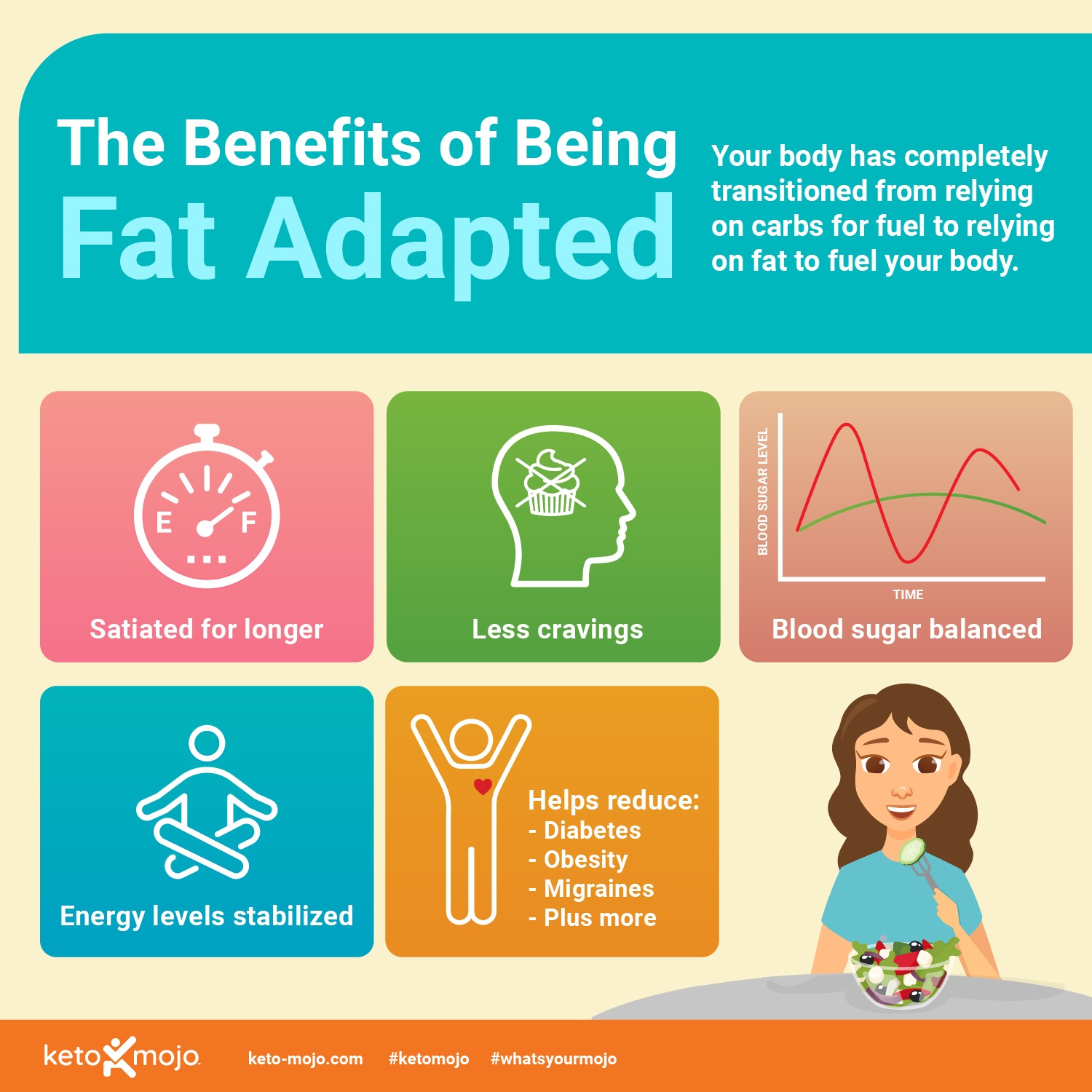UPDATED BY FRANZISKA SPRITZLER, RD, CDCES
If you’ve been following a ketogenic diet for a while, you’ve likely heard the term “fat adapted” (sometimes called “keto adapted”) and may have even been aiming for it. Reaching this state is a key goal of the keto lifestyle, as it means your body has fully shifted from using carbohydrates to efficiently burning fat as its primary fuel source.
When you begin a ketogenic diet, you’re teaching your body to shift from using glucose to burning fat for fuel: specifically, tapping into stored body fat that’s then converted into ketones. This metabolic transition is the foundation of becoming fat adapted.
But it doesn’t happen overnight. According to ketogenic experts like Dr. Steve Phinney and Dr. Jeff Volek, it typically takes weeks or even months to become fully keto-adapted, depending on your individual biology. Consuming too many carbs, even occasionally, can slow or stall this adaptation.
The rewards of becoming fat-adapted are well worth the effort. Once your body efficiently uses fat for fuel, you’ll likely experience several benefits, including the ability to go several hours between meals without feeling hungry.
So, how can you tell if you’re fat adapted? Let’s first understand the difference between being in ketosis and being fat adapted.
Ketosis vs. Fat Adapted
Ketosis and fat adaptation are often used interchangeably, but they’re not the same thing. When you significantly reduce your carbohydrate intake or fast, your blood glucose and insulin levels begin to drop. In the absence of sufficient carbs (sugar) to use for energy, your body turns to its backup fuel system: fat. It breaks down fat into ketones, which become your primary energy source. This metabolic state is known as ketosis.
When you maintain a state of nutritional ketosis for several weeks or longer, your body undergoes a deeper metabolic shift. Over time, it becomes more efficient at using fat and ketones as its primary fuel sources instead of glucose. This state is known as being fat adapted.
If you’ve been following keto for several weeks and want to know if you’ve become fat adapted, here are the top seven signs to look for:
7 Common Signs That You’re Fat Adapted
1. Decreased cravings between meals
Fat adaptation doesn’t just change how your body fuels itself. It also impacts your hunger signals. Levels of ghrelin, the primary hunger hormone, often decline once you’re in a steady state of ketosis and have become fat adapted. As a result, you naturally feel less hungry, experience fewer cravings, and become more comfortable going longer between meals without the urge to snack.
2. Increased energy
When you’re fat adapted, your body efficiently burns fat and produces ketones for fuel, providing a steady energy supply. This metabolic shift minimizes blood sugar fluctuations and supports sustained energy throughout the day.  3. Feeling satiated with less food
3. Feeling satiated with less food
Fat provides 9 calories per gram and delivers key fat-soluble vitamins (A, D, E, and K). It also promotes satiety by slowing digestion and stimulating cholecystokinin (CCK), a hormone that helps you feel full. Following keto-adaptation, this high-fat way of eating helps you stay satisfied and energized with less food.
4. Heightened mental acuity
Originally used therapeutically to manage epilepsy, emerging research suggests that ketones may enhance cognitive function by increasing levels of brain-derived neurotrophic factor (BDNF), a vital protein that supports learning, memory, and overall brain resilience. When you’re fat adapted, your brain efficiently uses ketones as fuel, which may lead to clearer thinking, improved focus, better cognitive performance, and enhanced mood.
5. Increased fat loss
When transitioning from being a sugar burner to a fat burner, one of the first noticeable changes is water weight loss due to reduced glycogen stores. After becoming fat adapted, your liver becomes efficient at producing ketones from fat. This metabolic shift supports ongoing fat loss – one of the key reasons many people are drawn to the ketogenic lifestyle.
6. Better sleep
Improved sleep is a common benefit of fat adaptation. Emerging research suggests ketogenic diet may improve sleep by enhancing adenosine activity in the brain by calming the nervous system and reducing inflammation. For a deep dive on the topic of ketogenic lifestyles and sleep, watch Amber O’Hearn’s presentation Ketogenic Diets, Sleep, and Satiety.
7. Increased endurance with physical activity
One of the key advantages of fat adaptation is enhanced energy efficiency during exercise. When you’re fat adapted, your body relies primarily on fat for fuel. This is significant because glycogen (stored glucose) is limited and quickly depleted, especially during prolonged activity. By contrast, even lean individuals have a much larger reserve of energy stored as fat. Fat adaptation improves metabolic flexibility, reducing the need for frequent refueling and helping prevent the energy crashes (“bonking”) often experienced by high-carb athletes. As a result, fat-adapted individuals can sustain energy and perform longer during endurance exercise.
The Benefits of Being Fat Adapted
All the signs above are great benefits to being fat adapted. But there are even more benefits:
- You can explore your carb edge: Once you’re fat adapted, you can begin experimenting with food and ketone testing to identify your individual carbohydrate tolerance. While some people need to stay around 20 grams of net carbs per day to remain in ketosis, others may maintain ketosis at higher carb levels. Testing allows you to find your unique “carb edge” and optimize your diet accordingly. Learn how to assess your personal threshold here.
- You can cycle in and out of ketosis with greater ease: Once you’re fat adapted, your body becomes more metabolically flexible, meaning it can transition in and out of ketosis with greater ease. If you occasionally consume more carbs than usual but return to a diet rich in healthy fats and moderate protein, you’re likely to re-enter ketosis more smoothly. Unlike those new to keto, fat-adapted individuals typically avoid the discomfort of “keto flu” during this transition.
- Unhealthy cravings disappear: When you’re fat adapted, cravings for sugar and carbs naturally diminish, and you feel more satisfied after meals. Without the constant pull toward high-carb, nutrient-poor foods, it’s easier to make intentional, nourishing choices. As a result, you’re more likely to meet your nutrient needs and feel better overall, both physically and mentally.
The Final Word
Becoming fat adapted doesn’t happen right away, but with consistency and patience, the results are well worth it. Once your body fully transitions to burning fat for fuel, you’ll unlock the wide-ranging benefits of keto living.




